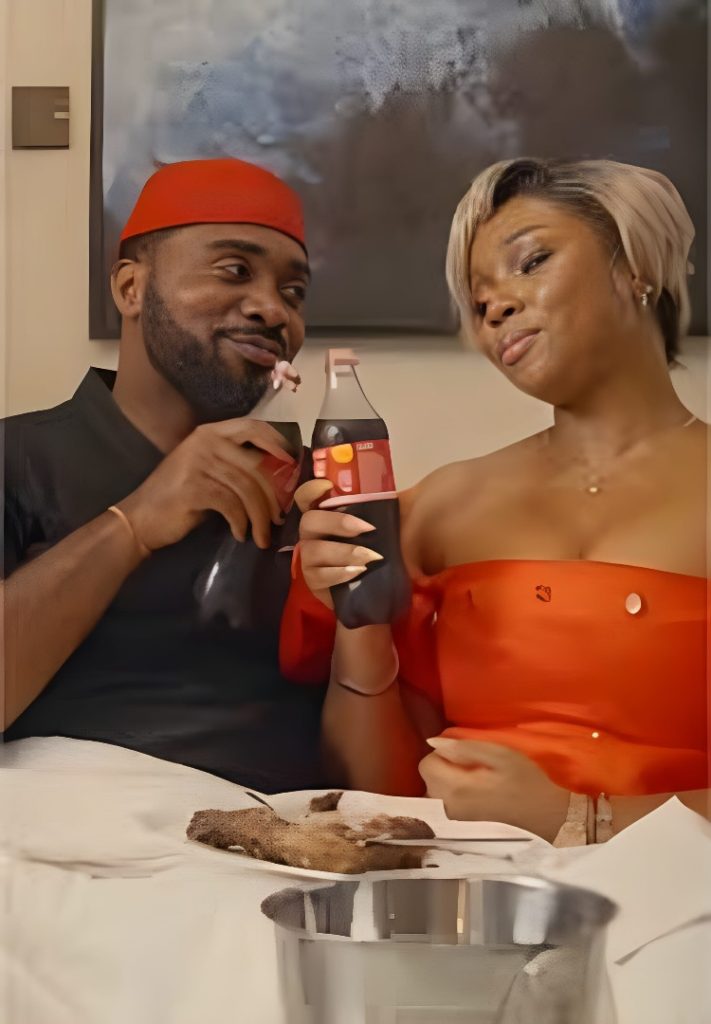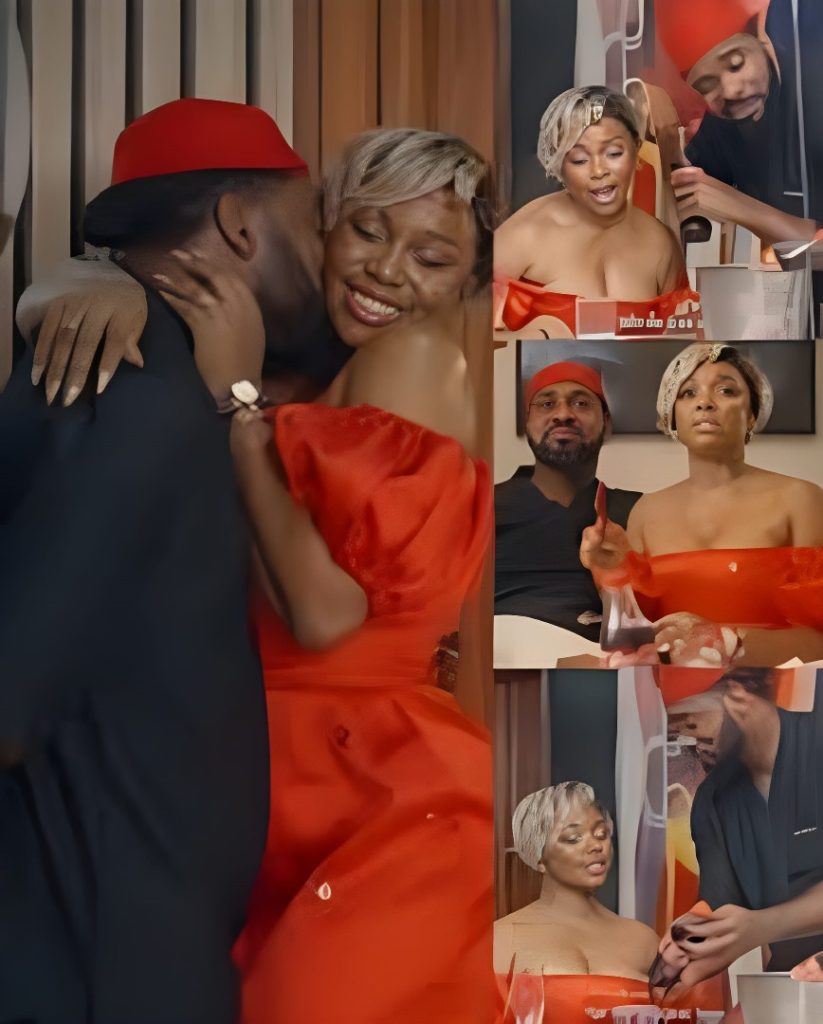Coca-Cola’s Genius ‘Achalugo’ Campaign: When Burping Becomes Love Language

It’s not that I don’t love our films, but between work and endless industry reports, I usually end up watching whatever Netflix throws at me. But when I kept seeing clips of Coca-Cola’s new ad with the “Love in Every Word” stars floating around my timeline, I knew I had to watch the original movie to get what all the fuss was about.
After watching Omoni Oboli’s romantic drama, I cannot help but agree with the ‘hype’ that the commercial is getting. Indeed, Coca-Cola rode a cultural wave, changing it into something entirely new while staying true to both the original story and its own identity.
Indeed, Coca-Cola’s approach with the Achalugo campaign is unique, a breakaway from the norm of in-movie ad placement. Traditional in-movie product placement has its merits, but it’s inherently limited. The brand becomes a passenger in someone else’s story, hoping for fleeting moments of visibility that may or may not translate to emotional connection.
What Coca-Cola did instead was ingenious: the brand extracted the emotional core of what made “Love in Every Word” resonate with over 23 million viewers and built its own narrative around it. Rather than being background players in Omoni Oboli’s story, Coca-Cola became co-creators of a new chapter that honoured the original while serving their commercial objectives.
To understand why this campaign works, you need to understand what “Love in Every Word” represents in Nigerian pop culture. The movie arrived at a time when Nollywood was actively working to correct stereotypes, particularly around Igbo men being portrayed as rigid and transactional in relationships. Uzor Arukwe’s Obiora challenged these stereotypes through patience, genuine affection, and emotional intelligence.
The “Achalugo” phrase became a cultural moment. Social media was saturated with couples playfully adopting the term, content creators were building entire posts around it, and the phrase had achieved that rare advertising goldmine, which is organic virality driven by genuine emotional connection rather than marketing spend.

Flipping the Burping Narrative
Perhaps the most sophisticated element of this campaign is how Coca-Cola addressed what marketers would typically consider a product liability. Carbonated drinks make people burp. This is usually treated as something to minimize or ignore in advertising. Most beverage campaigns focus on refreshment, taste, or social connection while carefully avoiding any reference to the less glamorous physiological effects of carbonation.
Coca-Cola took the opposite approach. It made burping central to their love story. What in the creative audacity is that? The strategic genius of acknowledging the burping factor and reframing it as intimacy…” a couple that burps together, drinks together” is central to the success of this commercial. Suddenly, the thing that might make someone hesitate to drink Coke in front of a romantic interest becomes evidence of comfort and closeness.
The psychological impact of this reframing cannot be understated. Instead of fighting consumer behaviour, they celebrated it. Instead of pretending their product doesn’t have certain effects, they made those effects part of the romance narrative. It’s a level of honesty that actually builds trust while solving a real marketing challenge.
Character Continuity and Storytelling Excellence
What struck me most about the commercial was how seamlessly it felt like a natural extension of “Love in Every Word.” The creative team clearly studied the source material deeply. Beyond just borrowing the characters’ names; they captured their essence, their relationship dynamic, and even the specific behavioral quirks that made them endearing in the original film.
The recreation of iconic scenes was particularly well-executed. When Obiora serves Coke in a champagne glass, it was consistent with his character in the movie. This is exactly the kind of thing the affluent, slightly show-off character from the movie would do. When Achalugo corrects him, it also comes ‘naturally’ to her, as it is in the film where she often had to manage his more extravagant tendencies.
These details matter because they maintain the authenticity that made people fall in love with these characters in the first place. Too often, when brands license or reference popular content, they lose the nuance that made the original appealing. Coca-Cola avoided this trap by treating the characters as real people with consistent personalities rather than just vessels for brand messaging.
Visual and Audio Excellence
From a production standpoint, the commercial has a high production values that match the quality of contemporary Nigerian cinematography. The lighting, sound design, and camera work don’t feel like a step down from the original film, a crucial element for maintaining the spell that these characters cast over audiences.
The audio design deserves particular praise. The “shhhh” sound of the bottle opening becomes almost musical, woven into the couple’s interaction in a way that feels natural rather than manufactured. This attention to sensory details turns simple product interaction into an intimate moment.
The costume and set design also maintain consistency with the characters’ established aesthetics while incorporating Coca-Cola’s brand colours without being heavy-handed about it. Everything feels intentional yet effortless.

Brand Integration 20% Extra Free
What separates this campaign from typical celebrity endorsements is how organically Coca-Cola becomes part of the story rather than interrupting it. Aimed at promoting its new 60cl bottle, it becomes a prop that enables character interaction and relationship building.
The “20% Extra Free” message, which could have been a jarring sales pitch, is delivered through the lens of the characters’ relationship. It’s about giving more to someone you love, which aligns perfectly with Obiora’s character, who was established in the film as someone who shows love through generosity and attention to detail.
This integration feels so natural that viewers don’t experience the cognitive dissonance that usually comes with advertising interruption. Instead of thinking “now they’re trying to sell me something,” the audience thinks “this is a continuation of a story I care about.”
Cultural Sensitivity, Authenticity
Many a times brands often stumble when attempting to engage with specific cultural moments. But Coca-Cola has shown what industry observers have described as cultural intelligence. The commercial feels authentically Nigerian in its humour, relationship dynamics, and cultural references without falling into the trap of performative Nigerianness that sometimes occurs when global brands try to localize content. The cultural elements feel lived-in rather than researched.
The campaign also demonstrates an understanding of Nigeria’s evolving media consumption patterns. Young Nigerians are increasingly consuming content across multiple platforms, and they expect brands to meet them in these spaces with content that feels native to each platform rather than adapted from traditional advertising formats.
Industry Implications
For the broader advertising industry, this campaign offers several important lessons. First, it demonstrates the value of cultural monitoring beyond basic social media trending. Brands that can identify and authentically engage with cultural moments have significant advantages over those that rely solely on traditional advertising approaches.
Second, it shows the power of collaborative creativity over appropriative marketing. Rather than simply borrowing popular elements, successful brands find ways to contribute to cultural conversations in ways that benefit both the brand and the culture they’re engaging with.
Finally, it illustrates how modern consumers respond to honesty and humor over perfection and aspiration.
Final Assessment
Coca-Cola’s Achalugo campaign succeeds on multiple levels that matter in modern advertising: cultural relevance, creative execution, strategic brand integration, and measurable engagement. It represents the kind of marketing that consumers actively want to engage with rather than simply tolerate.
The campaign’s greatest achievement may be in proving that Nigerian cultural content can serve as the foundation for marketing that feels both locally authentic and commercially successful. It suggests a future where brands become genuine participants in cultural conversations rather than external observers trying to insert themselves into existing narratives.
Coca-Cola’s Achalugo campaign shows that brands can create content that audiences genuinely enjoy while achieving clear commercial objectives. When done with this level of care and cultural intelligence, advertising stops feeling like marketing and starts feeling like entertainment that happens to feature a product.



